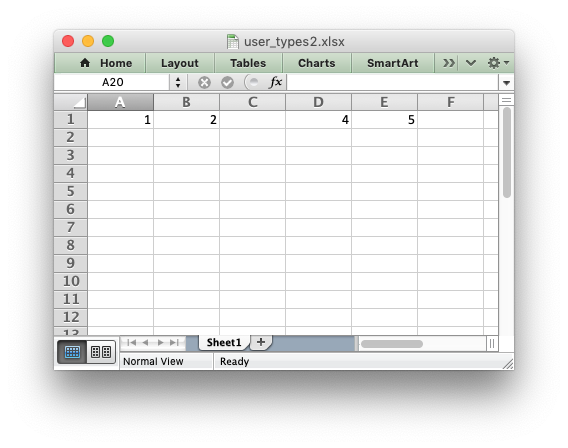Example: Writing User Defined Types (2)#
An example of adding support for user defined types to the XlsxWriter
write() method using the add_write_handler() method.
This example removes NaN (Not a Number) values from numeric data and
writes a blank cell instead. Note, another way to handle this is with the
nan_inf_to_errors option in the Workbook() constructor.
See the Writing user defined types section for more details on how this functionality works.

##############################################################################
#
# An example of adding support for user defined types to the XlsxWriter write()
# method.
#
# SPDX-License-Identifier: BSD-2-Clause
# Copyright 2013-2024, John McNamara, jmcnamara@cpan.org
#
import xlsxwriter
import math
# Create a function that will behave like a worksheet write() method.
#
# This function takes a float and if it is NaN then it writes a blank cell
# instead. It should take the parameters shown below and return the return
# value from the called worksheet write_*() method.
#
def ignore_nan(worksheet, row, col, number, format=None):
if math.isnan(number):
return worksheet.write_blank(row, col, None, format)
else:
# Return control to the calling write() method for any other number.
return None
# Set up the workbook as usual.
workbook = xlsxwriter.Workbook("user_types2.xlsx")
worksheet = workbook.add_worksheet()
# Add the write() handler/callback to the worksheet.
worksheet.add_write_handler(float, ignore_nan)
# Create some data to write.
my_data = [1, 2, float("nan"), 4, 5]
# Write the data. Note that write_row() calls write() so this will work as
# expected. Writing NaN values would raise a TypeError without the handler.
worksheet.write_row("A1", my_data)
workbook.close()